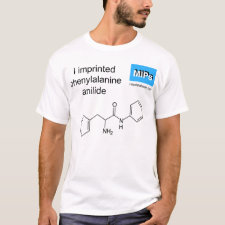
Authors: Miyabe K, Guiochon G
Article Title: A study of mass transfer kinetics in an enantiomeric separation system using a polymeric imprinted stationary phase.
Publication date: 2000
Journal: Biotechnology Progress
Volume: 16
Issue: (4)
Page numbers: 617-629.
DOI: 10.1021/bp000046w
Alternative URL: http://lib3.dss.go.th/fulltext/Journal/Biotechnology%20Progress/Biotechnology%20Progress/2000/no.4/2000v16n4p.617-629.pdf
Abstract: Chromatographic data pertaining to the enantioseparation of L- and D-phenylalanine anilide (PA) on a polymeric stationary phase imprinted with L-PA were studied from the viewpoints of phase equilibrium, mass transfer kinetics, and the thermodynamic properties of this enantiomeric separation system. The concentration dependence of the lumped mass transfer rate coefficient (k(m,L)) previously published was analyzed to obtain new information concerning the mass transfer characteristics in this chiral separation system. It was shown that intraparticle diffusion contributed much more to k(m,L) than adsorption/desorption. The positive concentration dependence of k(m,L) seemed to be interpreted by considering that of the surface diffusion coefficient, itself explained by the heterogeneous surface model. The characteristic features of the phase equilibrium, the mass transfer kinetics, and the thermodynamics of the enantiomeric separation system probably result from the adsorption energy distribution on the surface of the imprinted phase having an exponential decay
Template and target information: L-phenylalanine anilide, L-PA



Join the Society for Molecular Imprinting

New items RSS feed
Sign-up for e-mail updates:
Choose between receiving an occasional newsletter or more frequent e-mail alerts.
Click here to go to the sign-up page.
Is your name elemental or peptidic? Enter your name and find out by clicking either of the buttons below!
Other products you may like:
 MIPdatabase
MIPdatabase









